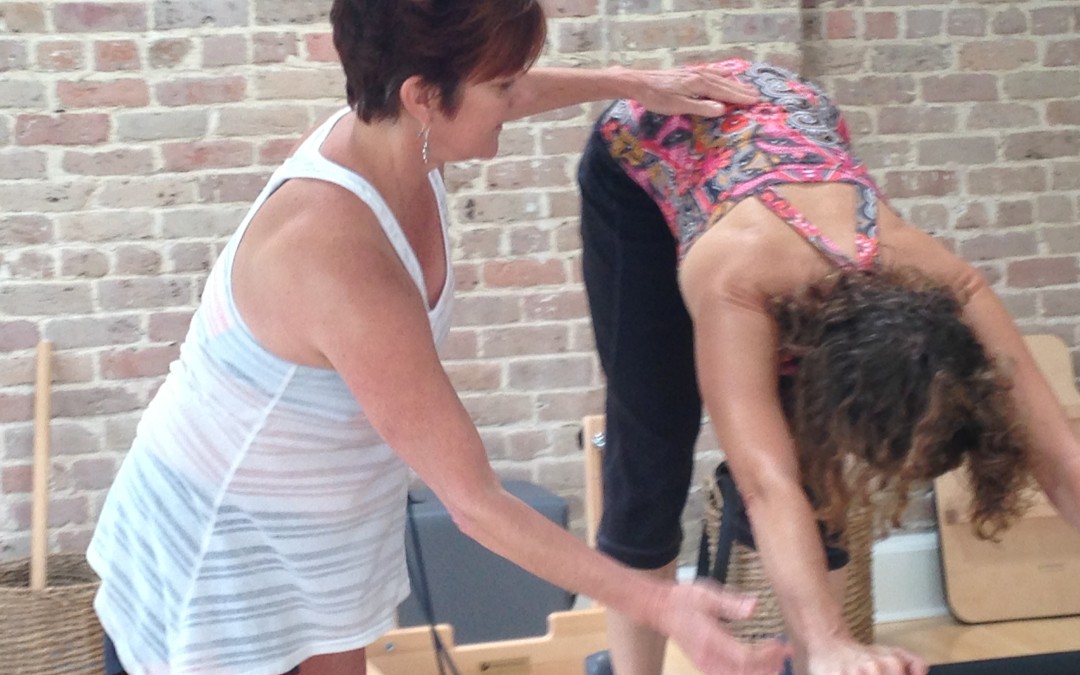While in Stanford University’s Collaborative Haptics And Robotics in Medicine (CHARM) Lab reading group this summer, I was introduced to the paper, “The role of strategies in motor learning,” by Jordan Taylor and Richard Ivry from University of California at Berkeley. The paper got me thinking about how motor learning relates to teaching and practicing mindful movement.
First, some groundwork. Motor learning involves a movement that has been practiced extensively so that it results in a long-term change to the brain and the development of a relatively permanent skill. In short, you really know it. Think about the plie, a common warm-up movement in dance and in the very popular barre classes surging through the fitness industry right now. Perhaps in your teens you were an aspiring dancer and you practiced many plies over the years. Then you stopped dancing in college. When you’re in your thirties, a barre studio opens up in town. You attend class and they ask you to face the barre and do a plie. But the plie is different from what you first learned in dance class. It is smaller and more challenging than you remember it. But the memory of the plie motor skill is still there. That is an example of motor learning: you remember how to do that plie because it is a well-learned motor skill. So is riding a bike. Even if you haven’t ridden a bike in years, you still remember how to do it.
The Taylor and Ivry article makes three useful points about motor learning, teasing out the difference between motor strategy and motor adaptation, and exploring how they work together to contribute to motor learning. Here are my three takeaways:
1) Strategy is conscious movement learning to obtain a specific goal
Strategy helps solidify long-term movement learning. Taylor and Ivry mention high jumping as an example of motor strategy–consciously changing your body’s movement to reach a certain goal. In 1963, Dick Fosbury changed the high jump forever. Instead of jumping over the high bar sideways, which was standard at the time, Fosbury threw his body over the bar by leaning backwards and landing on his back. Fosbury made a conscious decision to change his movement strategy. And it worked. Five years later, he won the Olympic Gold medal in high jumping at the 1968 Mexico City Olympics.
In mindful movement you create strategies all the time. Say the movement goal is to perform a plie. You stand at the barre, but your knee hurts while doing the movement. The teacher comes over and corrects you, telling you to turn your thigh bone out at the hip so it tracks correctly over your toes instead of rolling forward and causing a painful torque in your knee. Here your goal is to do a plie without hurting your knee, and your strategy is to use correct form. Your hip starts “killing you,” in a good way, as the muscles are weak. But your knee feels good, even as your hips burn with muscle fatigue. Like Fosbury, you chose a movement strategy –in your case, to protect your knees and get a great bum. You may not win an Olympic Gold metal, but you now have a successful barre routine that won’t bug your knees!
PART 2
2) Adaptation tweaks learned movements and is sensitive to error detection
3) If we pay attention to both strategy and adaptations, we can improve mindful movement practices.
Read the Mindful Movement and Attention Networks 3 part series
Attention Networks in Mindful Movement Part 1 Alerting
Attention Networks in Mindful Movement Part 2 Orienting
Attention Networks in Mindful Movement Part 3 Executing
Sign up Now! Attend Body Brain Connect Workshop November 8-10th




